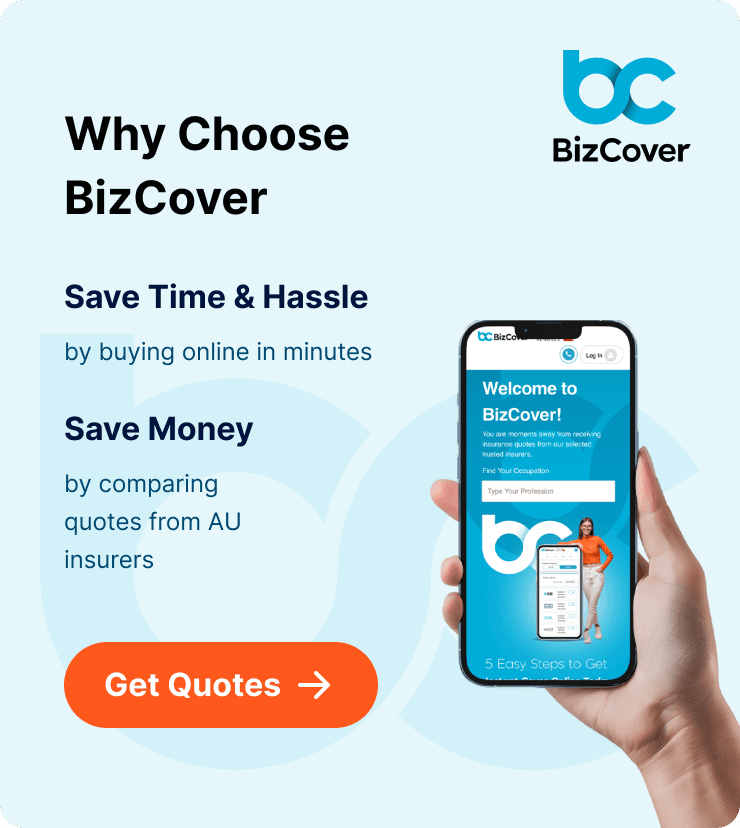How to write a winning consulting proposal
A consulting proposal is the cornerstone of a successful consulting relationship. It lays out the framework of your project, aligning your expertise with the client’s needs. This guide will lead you through creating a consulting plan that resonates with potential clients, effectively marrying your skills with their goals.

What is a consulting proposal?
A consulting proposal is your business’s handshake, the first formal agreement offered to a potential client. It’s a document that not only outlines the specificities of a consulting project but also serves as your marketing pitch. In essence, it’s where your services meet the client’s needs head-on.
A well-crafted consultancy services proposal gives a clear picture of the project scope, timelines, and your unique approach to solving the client’s problems. It’s your chance to shine, showcasing how your expertise is the solution they’ve been searching for.
Tips to follow before writing a consulting proposal
Before diving into your consulting plan, there’s a bit of groundwork to cover first. Here are a few key steps that help set the stage for a consulting proposal that truly captures the essence of your client’s needs.
1. Have a pre-proposal chat with your client
This initial conversation is where you build a rapport. It’s an opportunity to hear their voice, see their perspective, and let them know they’re in capable hands. The chat can take place via a phone call or a face-to-face meeting, but this step is about laying the foundation for a tailored consulting plan that aligns perfectly with their expectations.
2. Discuss your client’s needs and challenges
A key element in writing an effective proposal for consulting is thoroughly understanding your client’s specific needs and the challenges they face. By asking targeted questions and listening intently, you gain invaluable insights that allow you to tailor your consulting plan to address their specific pain points and objectives. The goal here is to ensure that your proposal is not just a general plan of action but a customised strategy that reflects a deep understanding of your client’s unique situation and desired outcomes.
3. Shine the spotlight on your USP
This is your chance to make it clear why you stand out from the competition. When you articulate your unique selling proposition in your proposal, you’re giving the client a compelling reason to choose you. Focus on specific skills, experiences, or approaches that you bring to the table, which uniquely position you to address the client’s needs effectively.
How to write a consulting proposal
An effective consulting proposal strategically showcases how your expertise meets the client’s needs. This section will guide you through creating a consultancy services proposal that not only informs but also engages and convinces your potential client.
Write a compelling executive summary
In your executive summary, you set the stage. This section is your opportunity to succinctly present the problem your client faces and how your services are the solution. It should contain the essence of your proposal, clearly outlining the project goals and your approach in a way that speaks directly to your client’s needs.
Think of your executive summary as a highlight reel. It’s your chance to make a strong first impression and demonstrate your understanding of the client’s situation, while confidently positioning yourself as the answer to their challenges.
Demonstrate unique qualifications and experiences
Here is where you weave your qualifications, experience, and success stories into a narrative that aligns with the client’s goals. Focus on how your particular skill set, approach, and insights are not just suitable but ideal for addressing their specific challenges.
Highlight past successes with clients that mirror the challenge your current client is facing. Your aim is to make the client see that in the sea of options, your unique blend of skills and experiences is precisely what their project needs.
Outline a thorough project scope and deliverables
Here is where you translate your understanding into action. Clearly outline the steps you will take and the specific outcomes you aim to achieve. Be as precise as possible in detailing these deliverables, so your client has a concrete understanding of what the end results will look like. This section should leave no room for ambiguity, aligning your proposed actions with the client’s expectations.
Set realistic and measurable project objectives
This means setting goals that are attainable within the project’s scope and timeframe, and which can be quantifiably assessed. Articulate these objectives clearly, linking them to the client’s broader business goals. This approach not only aligns your services with the client’s expectations but also provides a clear benchmark for success, making it easier to evaluate the project’s impact and your effectiveness as a consultant.
Establish timelines and milestones for project completion
A key component of your consulting plan is setting clear timelines and milestones. To do so, you’ll have to break down your project into manageable stages, each with its own deadline.
Establishing these markers helps foster a sense of accountability, while maintaining a shared vision between you and your client. Clear timelines give your client a sense of security, knowing exactly when each stage of the project will be tackled and completed, thereby building trust and ensuring a smoother collaborative journey.
Specify additional project terms and requirements
In your consulting plan, it’s important to articulate any additional terms and requirements that will govern the project. This section can cover aspects such as payment terms, confidentiality agreements, or specific client responsibilities. By outlining these elements, you ensure a comprehensive understanding of the working relationship, leaving no room for ambiguity. This detailed approach sets the professional tone of the engagement, and safeguards both parties against potential misunderstandings.
Key elements to include in a consulting proposal
A well-structured consulting plan is built around several critical elements. These components are the backbone of your proposal, combining to create a document that effectively communicates your approach, value, and plan for the project at hand.
1. Client greetings
A personalised greeting to the client is a crucial step in building rapport. A few well-chosen words can set your proposal apart and demonstrate your genuine interest in the client’s project. Start by addressing the client respectfully, using their formal title, and express gratitude for the opportunity to present your proposal. This touchpoint sets the tone for the entire proposal, demonstrating you value their consideration and are enthusiastic about the potential partnership.
2. Project summary
Your project summary serves as your hook to draw clients into your proposal. This is where you concisely capture the project’s scope and the problems you’re addressing. In a few sentences, paint a clear picture of the project and articulate the client’s core challenges. Use this space to succinctly express your understanding of the project and its goals. While the focus is on the project, a brief mention of your relevant experience or unique approach can be included, ensuring the client sees the value you bring to the table.
3. Project scope
This is where you detail the ‘how’ of the project, providing a crystal-clear breakdown of the tasks and actions you will take. Include three to five bullet points that cover all aspects of the work, from initial assessments to final implementations.
For example, if your project involves optimising a marketing strategy, specify the number of meetings, the analysis process, and the expected output. The goal here is precision — a well-defined scope not only guides your work but also aligns expectations with your client, preventing any scope creep and ensuring a smooth project trajectory.
4. Project objectives
Next, list three to five key goals that the project will achieve. This is where you focus on the impact and results your work will have on the client’s business. Clearly articulate what success looks like, such as improved efficiency, increased revenue, or enhanced customer engagement. This section of your consulting plan helps the client visualise the real-world benefits and the return on their investment in your expertise.
5. Project deliverables
The deliverables section is where you outline the specific, tangible outcomes the client can expect. This is the “what” of your proposal – the concrete products or results of your efforts. This section of your consulting plan needs to be clear and precise, ensuring the client understands the value they will gain from engaging your services.
6. Timeline
A well-defined timeline provides a step-by-step guide to how the project will unfold. Include key milestones, such as the completion of major deliverables or critical review meetings, and specify realistic deadlines for each stage of the project.
By detailing each step, you provide a structured approach that instils confidence and sets clear expectations for both parties. This meticulous planning reflects your professionalism and commitment to keeping the project on track.
7. Costs and fee structure
Be upfront about your consulting fees and explain what these fees cover. Are there separate charges for different stages of the project, or is it a comprehensive cost? If you have specific payment requirements, such as upfront payments or instalments tied to project milestones, this is where to state them. Also, it would be helpful to mention your preferred payment methods or any specific platforms you use.
8. Signature
The signature section is your call to action. It seals the deal and invites your prospective client to commit. Provide a designated space for the date, the client’s name, and their signature. By including this section directly in the proposal, you streamline the process, avoiding the need for a separate, finalised contract. This approach not only saves time but also demonstrates your efficiency and eagerness to get started.
Seal the deal with confidence
The goal of writing a proposal for consulting is to provide a clear, concise, and compelling blueprint that aligns with the client’s vision. Every section of your proposal, from the greeting to the final signature, should contribute to a sense of trust and excitement about the possibilities ahead. By combining a clear understanding of the project with a well-structured proposal format, you can create a roadmap for success.
Crafting a winning consulting plan is just the beginning of your business journey. As a consultant, you’re skilled at managing your clients’ risks, but what about your own? In the consulting world, unexpected situations can arise, and it’s wise to be prepared.
At BizCover, we understand the importance of securing your hard work. That’s why we offer straightforward, no-drama insurance solutions for consultants like you. With BizCover, you can compare multiple quotes in just minutes and choose the consulting insurance that’s right for you, no paperwork required. Visit BizCover and secure your business’s future today.
© 2024 BizCover Pty Limited, all rights reserved. ABN 68 127 707 975; AFSL 501769
This information is general only and does not take into account your objectives, financial situation or needs. It should not be relied upon as advice. As with any insurance, cover will be subject to the terms, conditions and exclusions contained in the policy wording. © 2025 BizCover Limited.





